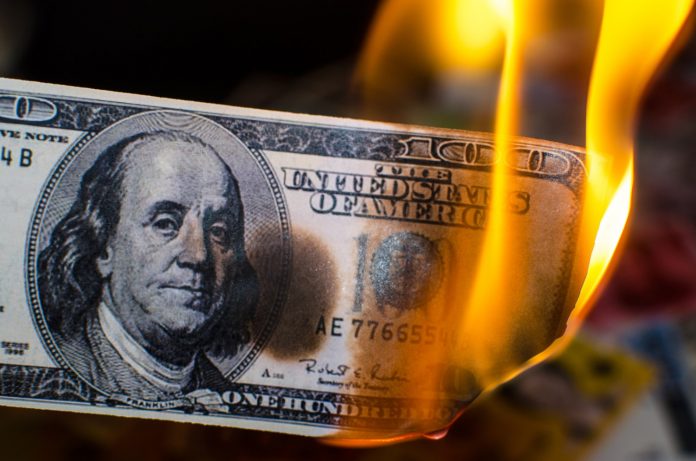Today’s session was a rollercoaster, with losses picking up steam in mid-morning trading. The tech-heavy Nasdaq led the descent, shedding about 1.2%, while the S&P 500 wasn’t far behind, dropping around 0.7%. The Dow Jones Industrial Average also felt the heat, dipping 0.4% or more than 130 points. This comes on the heels of tech stocks logging their worst single-day performance in eight months yesterday. The concern? Sky-high valuations in a landscape of surging Treasury yields.
The benchmark 10-year yield took a slight breather today, falling 5 basis points to hover near 4.90%. This move followed a hot GDP reading that showed the U.S. economy growing at its fastest clip in nearly two years. The Bureau of Economic Analysis’s advance estimate for the third quarter revealed an annualized growth rate of 4.9%, outpacing consensus forecasts. For context, economists surveyed by Bloomberg had pegged growth at an annualized 4.5%. This figure also surpassed the second quarter’s GDP, which was revised downward to 2.1%.
The robust GDP data underscores the resilience of the American consumer, defying expectations of a slowdown. However, many economists view this as the peak before a descent, driven by the Federal Reserve’s tightening measures and the recent uptick in bond yields. “Factoring tighter credit conditions, the restart of student loan payments, uncertainty regarding the lagged impact of monetary policy, and a fragile global economic backdrop, real GDP growth is likely to drift below trend for several quarters,” noted EY chief economist Greg Daco. He anticipates a muted 1.4% GDP growth in 2024, following an expected 2.4% in 2023.
Federal Reserve Chair Jerome Powell recently indicated that the central bank would need to see a slowdown in economic activity to ensure that prices continue to cool. “We certainly have a very resilient economy on our hands,” Powell stated during a discussion at the Economic Club of New York. “Many forecasts called for the U.S. economy to be in recession this year. Not only has that not happened; growth is now running for this year above its longer-run trend. So that’s been a surprise.”
The Fed’s next interest rate decision is slated for November 1, and it’s not just the U.S. central bank that’s in focus. Today, the European Central Bank (ECB) held interest rates steady for the first time in over a year, following 10 consecutive rate hikes. The ECB will maintain its deposit rate at a record high 4%, sticking to its previous guidance of a steady policy moving forward.
So, what’s the takeaway for traders? The market is grappling with a tug-of-war between hot economic data and the looming shadow of continued tightening. Tech valuations are under scrutiny, Treasury yields are fluctuating, and central banks are in a policy transition phase.
In other words, it’s a worst-case macro scenario for bulls. But if yields halt their advance, we may just see a major rebound in both bonds and stocks, which seems likely given that the market remains very oversold.









